Ray Hahn
John Charles Maggs
and Five of his Coaching Inn Paintings

The Elephant and Castle Inn
There is an ancient legend about the name of the Elephant and Castle coaching inn in the painting above by John Charles Maggs. The name was meant to honor Queen Eleanor of Castille (1241-1290), who was the wife of King Edward I.
The earliest known record is dated 1765, in that a mayoral conference was conducted at the inn, but the meeting was more than five-hundred years after the Queen’s death, which seems to negate the idea of an honorarium. The legend portends that the ear of the average Englishman of the era was not sufficiently “tuned” to the speech inflections of the average nobleman, hence when it was announced that “King Edward has married “Eleanor of Castille,” the listener heard “King Edward has married an Elephant an’ castle.” The name was so popular with those who lived in that part of South London that it was adopted to denote the entire neighborhood surrounding the inn. The legend surrounding the name has been debunked in a new history published in 2013, but it is doubtful that the new research will affect any renaming.
Apparently the original (circa 1765) Elephant and Castle Pub and Inn, needed to be rebuilt in 1816 and again in 1898 and the 1960s. The painting is certainly the 1816 edifice. Today as a result of a comprehensive redevelopment program, a new pub sits on a corner of New Kent Road and Newington Causeway intersection.
The card above is one from a sixteen-card set published very early in the 20th century by the Hancock & Corfield Company. Postcard History has eleven cards from the set and an illustrated checklist is available on request.

Address side of most Hancock & Corfield postcards
John (officially, James) Charles Maggs (1819-1896) is the signed artist of the painting. Maggs shaped his reputation by becoming a single topic artist. He was famous for his paintings of old English coaching inns. Throughout his career he painted more than 80 inns and public buildings in rural and metropolitan settings, most of which included an arriving or departing coach. Naturally people, horses (and often dogs), neighboring buildings, and dozens of other street-scene elements are included in his artistically “busy” paintings.

The Copenhagen House
Copenhagen House opened as a tavern, inn, and tea house for diners, drinkers, and guests in September 1850. The origin of its name is foggy at best. It could be in honor of a state visit by the King of Denmark in 1606 or as the residence of the Danish ambassador who lived there during the 1665 London plague. “The Old Cope” soon became a haven for both amateur and professional athletes, but it did not last long. When the house first opened, the surrounding grounds were developed for sporting events and competitions. There was a 200-yard straight dash-track, an oval gravel track of one third of a mile, and a cricket pitch. During that time, one of the first world records for the mile was set at the Copenhagen Field when Charles Westhall ran one mile in four minutes, 28 seconds, on July 26, 1852.
In December 1853 a harsh snowstorm befell the Islington section of London, and the Old Cope was later closed due to unrepairable storm damage.

The Cock and the Magpie
As early as 1840 the Cock and Magpie occupied a low building (only three stories) at 88 Drury Lane. At the time the façade of the pub sat even with its neighboring buildings, but it had a tiled roof and offered eight chambers for overnight guests. The last of the day’s regularly scheduled coaches concluded its day-route exactly at their front door. On some occasions, as many as ten passengers would be aboard.
The site is an integral part of the Covent Garden scene. On many occasions those who had finished their work in the theatres could be found in the pub with pints of lager ordered to “help refresh their vocals.” One such regular at the Cock and Magpie was Nell Gwynne.
[If you have forgotten, Eleanor “Nell” Gwynne was a stage actress in the 1660s who was revered by Samuel Pepys for her comic stage skills and as one of the early stage actresses who earned celebrity by “snuggling” with English royalty – in her case it was King Charles II.]

The Old Queen’s Head Tavern
The Old Queen’s Head is still a full-service pub facing Essex Road at Queen’s Head Street. The pub on the ground floor dates from the early 1900s, but the interior contains several features from the earliest building on the site, circa 1690. The coaching inn as seen in John Maggs’s painting dates from the 1830s.
The 1830s iteration of the structure was completed using yellow Flemish bonded bricks. The windows facing Essex Road were in the waiting rooms used by those who wanted to greet visitors leaving the coaches arriving at the pub at the end of the day. One of the first public buildings in London to use shades instead of curtains seemed to tint the incoming light an eerie shade of green that often caused – according to legend – visitors to feel various degrees of stomach discomfort.
The Old Queen was also well known for their molded-plaster ceilings and their wood and ceramic mantle pieces. Students and street artists have been known to spend hours with their friends and fellow imbibers, doing renderings of chimneypieces.
With more than three centuries of history, the Old Queen finds its name on the Haunted Pubs of London list. The most notorious of the Queen’s ghosts are a young woman and a small girl dressed in Tudor style clothes.

The White Hart Inn
John Maggs included horses and dogs in many of his paintings. The piece showing the Old White Hart Inn has both, and a coach, another of Maggs’s signature objects.
The White Hart claims to be the oldest pub in London and there is proof that a public house has been on the corner of Drury Lane and High Holborn streets since 1216. In those years the area was known as Saint Giles Village and the pub was named the Whyte Hart Public House. The Whyte Hart was legendary even then for it was notorious for guesting highway men, thieves, and rogues.
One legend from the 1590s names Frederic Thomas Linwood, who was known as the Muffin Man, as a Drury Lane resident. The story goes that he killed at least fifteen children by luring them into dark alleys with a muffin. Linwood was apparently a great baker, but he simply would not tolerate competition. It is said that he killed at lease ten of his rival pastry chefs with a wood spoon that he had carved into a pointed weapon.
In the sixteenth and seventeenth centuries, this area was quite fashionable with the likes of the Marquess Argyll, Oliver Cromwell and Nell Gwynne in residence. However, by the eighteenth century the area around the White Hart became one of London’s worst slums. Interestingly, the White Hart became notorious, for in those years, it was the prerogative of condemned men to stop in for a last drink and a woman’s comfort before facing the executioner’s axe or the hangman’s noose.

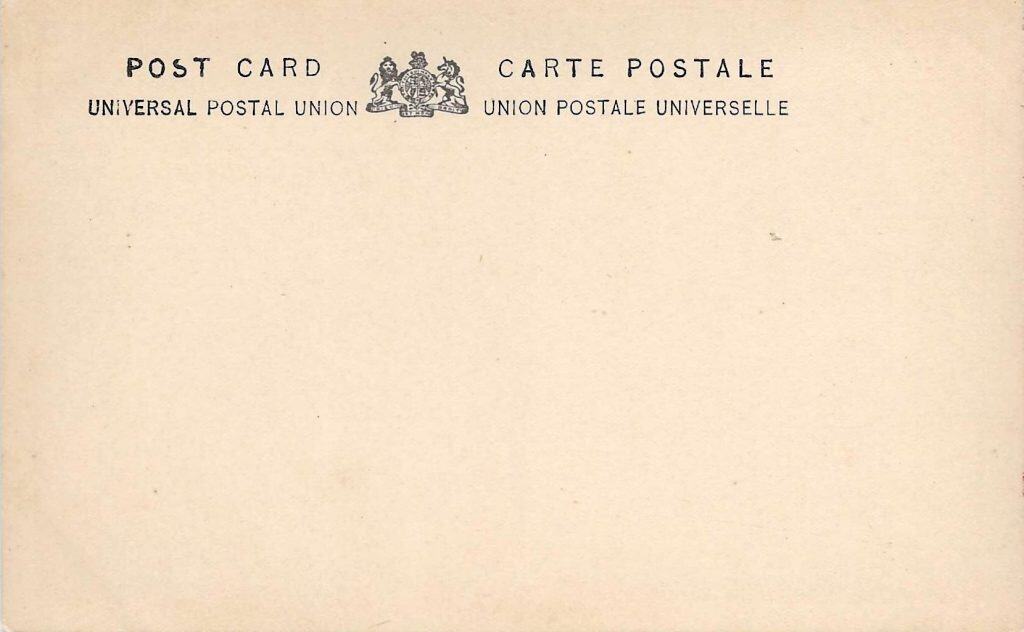
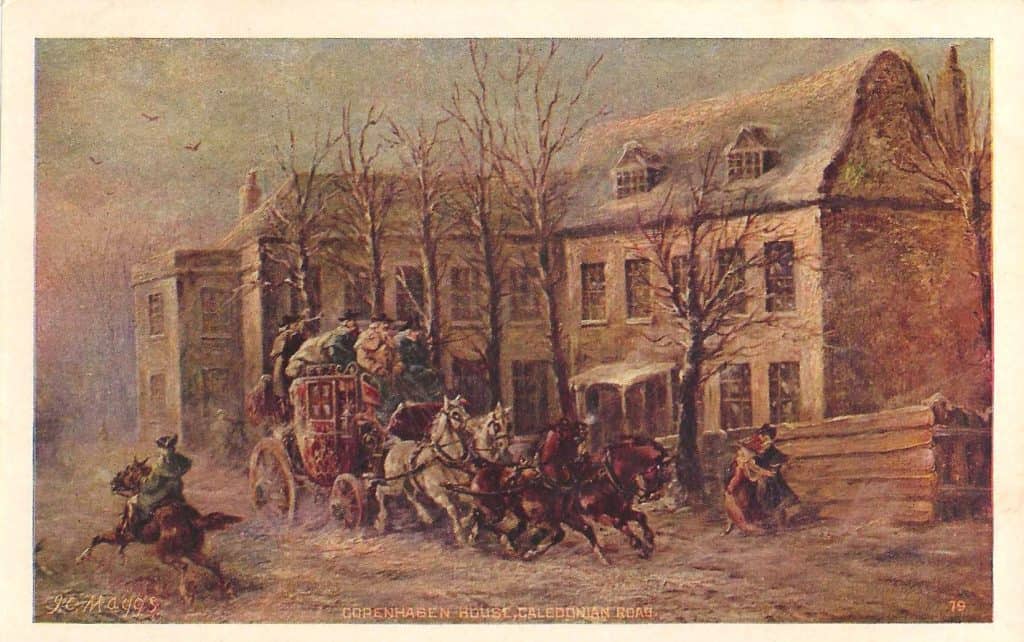
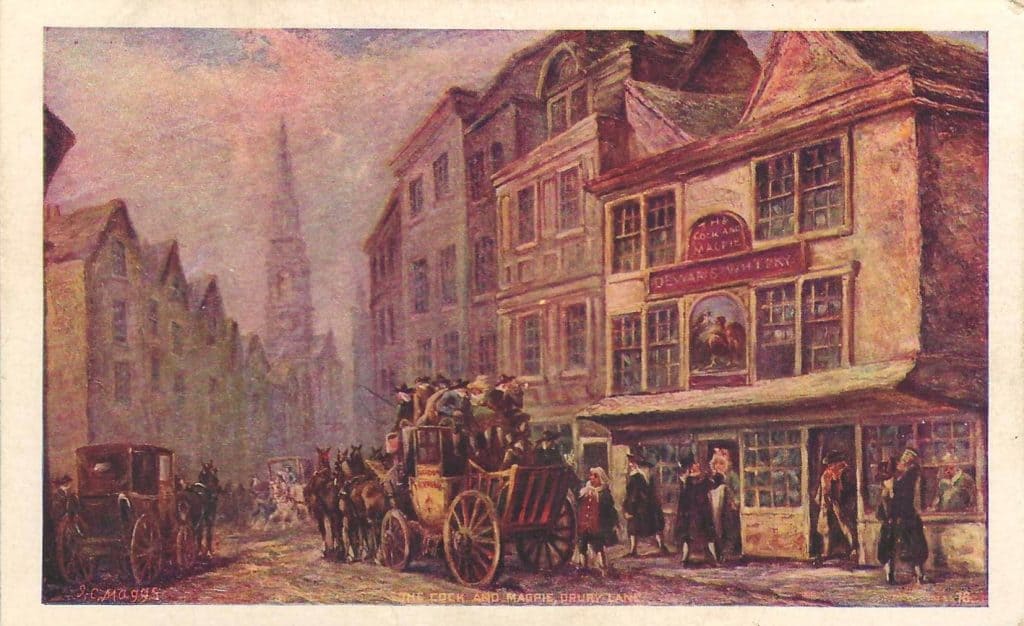
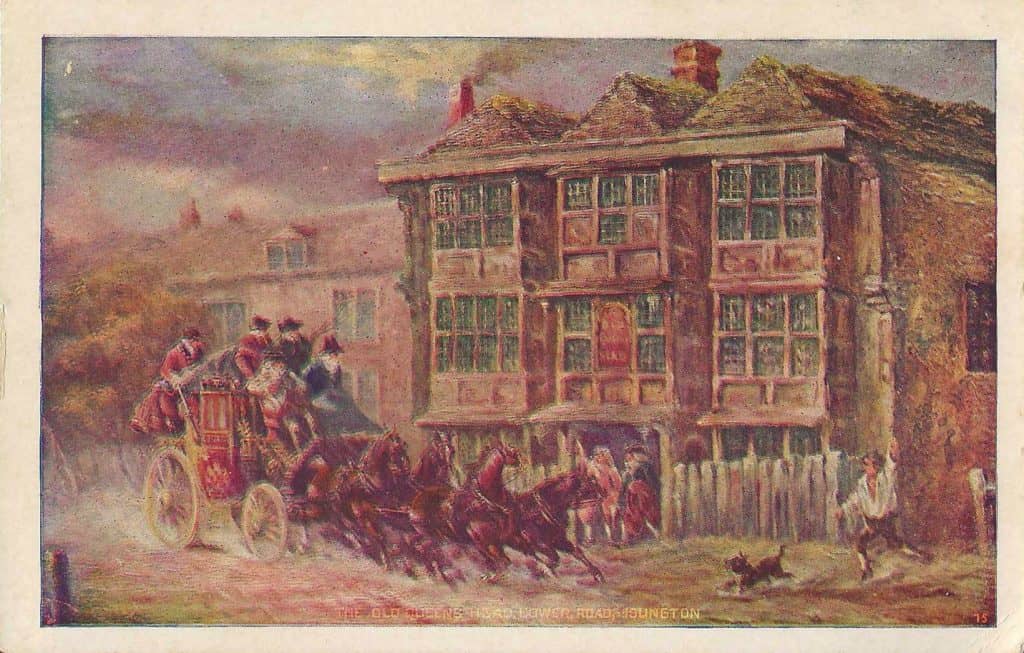
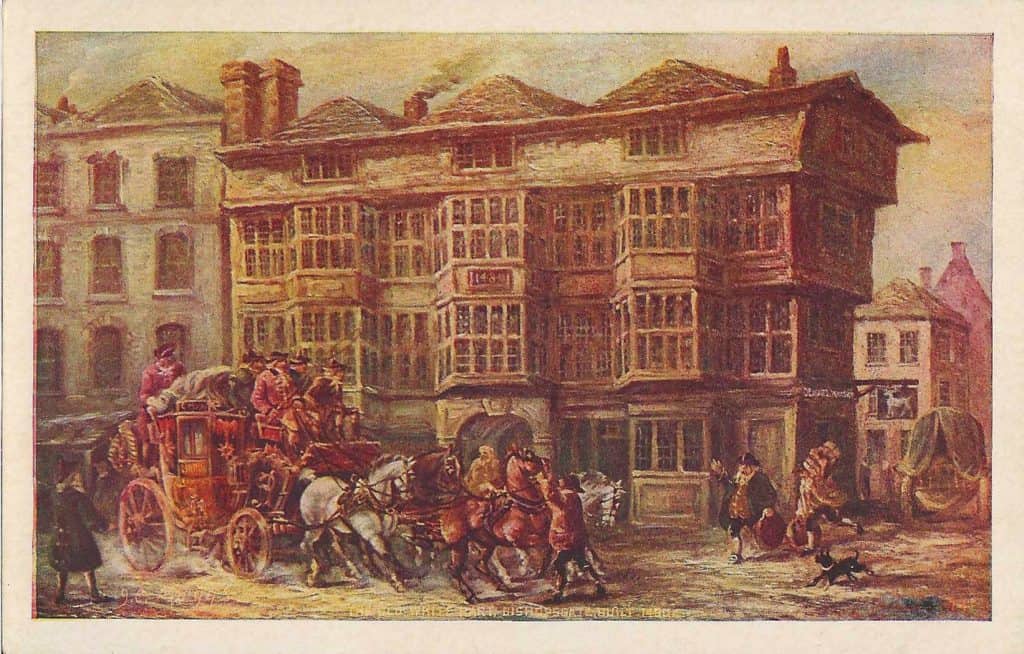
I have a couple of these cards and when researching ‘The Old Queens Head’ I wrote – No self-respecting British pub of this vintage would be without a resident ghost and the Old Queen’s Head – perhaps rather greedily – boasts of three. These are – 1. The Ghost of Sir Walter Raleigh. Since opening its doors to the people of London, several patrons and staff have reported encountering the spirit of Sir Walter. They have described him as a seemingly cultured gentleman, bearing a striking resemblance to the 16th century writer. He has surprised many an unsuspecting staff as… Read more »
I’d like to get the check list if that is still possible.
Cheers
Bernie
I just love seeing older postcards like these w/original paintings by the artist of their times.
I always figured the Muffin Man was just a regular baker, so I was surprised to learn the grisly truth (or at least legend) behind the rhyme.
I love these stories and the paintings. Thanks so much!!
This article had a couple surprises in it. I had no idea about the muffin man or the Elephant and Castle. If the check list is still available I would love to snag a copy.
Mr. Hahn I realize its been awhile ,but,could I possibly get the list of 16 cards from this set. I had it awhile back and lost it when my computer crashed.
If possible that would be very helpful.
Thanks.